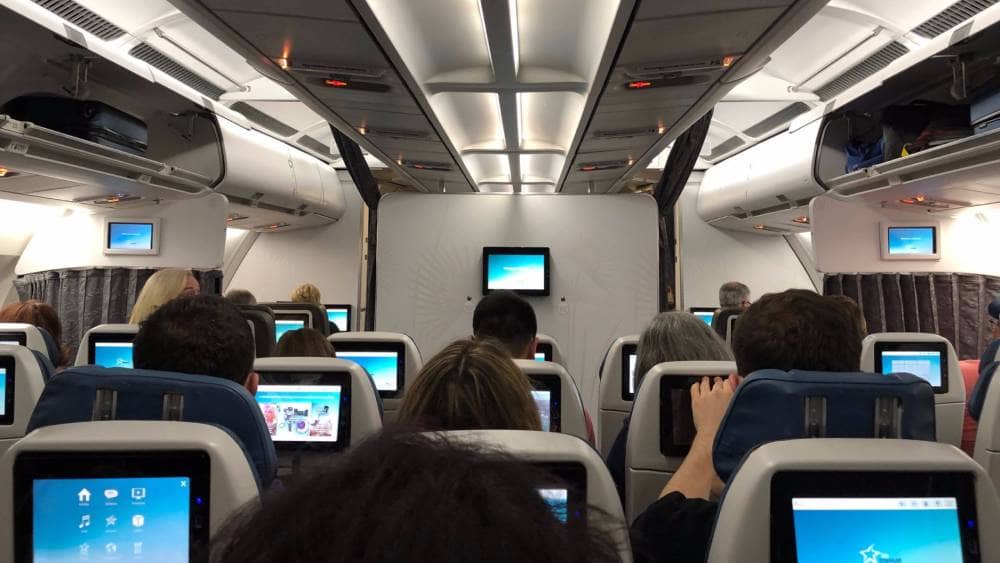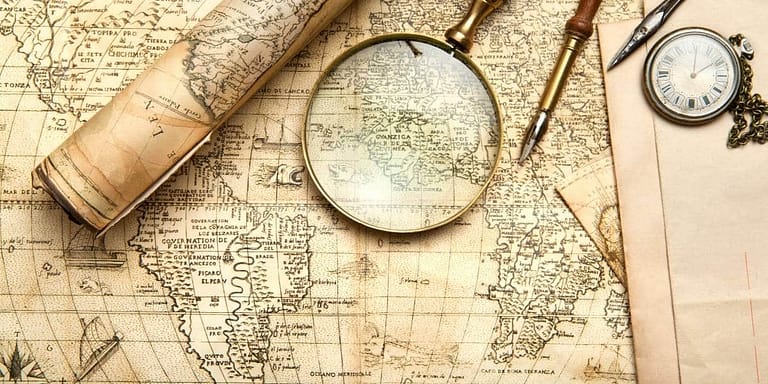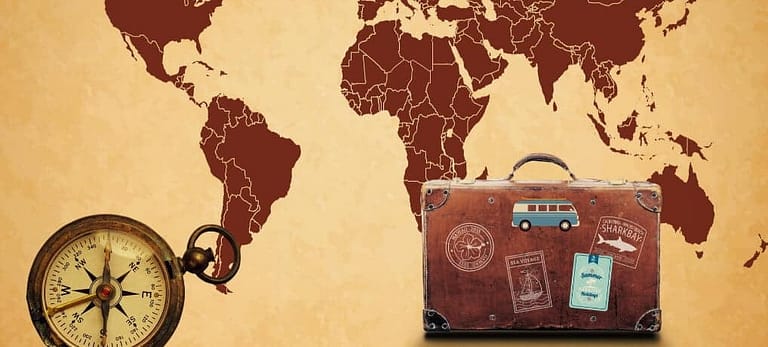International travel tips for new and infrequent travellers
As a frequent traveller, the process of planning, booking and travelling is now like breathing. It’s easy to forget that not everyone travels as much or at all. I am always reminded of that while I’m going somewhere, especially internationally. So, if you’re unsure, anxious or scared of visiting a new country, this international travel tips and advice guide is for you.
Travel becomes easier the more you do it. Like anything else, it’s a process you learn to navigate. From time to time, the rules change, but the main concepts remain the same. This international travel tips guide, based on my experience and those of many other bloggers, will help you cover the main points.
Affiliate Disclosure – This post contains affiliate links. If you make a purchase through these links, I may earn a commission. This doesn’t affect your purchases or any fees you may pay for the product or service. Read more in my DISCLAIMER.
General travel tips before you travel
It’s never been easier to book a trip than it is today. With a few clicks online, you can buy plane tickets, book hotels and excursions without leaving your couch. Sometimes the deals are so great it feels criminal not to book them. Ah, the temptations.
There are a few things to consider, especially if the deal is too good to pass and is available for a limited time. This is probably the most overlook of travel tips, but quite important.
The booking process
Before you book that flight, cruise or trip, make sure you read the fine print. Sometimes deals are available for travel within a certain time of the year. For example, you have to travel within specified dates and there are no changes allowed. Does the company/airline/cruise offer refunds or allow you to change dates? You may be required to purchase this type of insurance separately, but make sure you again check the details.

Sometimes you can change your dates or get a refund (full or partial) due to unexpected health issues, death or other emergencies. Deciding to go at a different time or not at all might not apply. Some credit cards, especially those with travel points and incentives, automatically cover certain events, ex. airline goes out of business, flight cancellations due to weather or other unexpected delays.
The card sometimes also provides insurance (health, cancellation or accident), so check yours before you book. Additionally, you should also consider travel/health insurance if you don’t have one. This is one of those travel tips that I always factor in my travels. Quite often, a credit card offers travel insurance, so make sure you contact yours for details.
Travel insurance (by Filler Chapters)
Buying travel insurance is the least sexy part of travelling. However, it’s one of the most important travel tips. It’ll suddenly feel like the smartest of moves if you’re ever unfortunate enough to need it. The process itself can be confusing and full of jargon. You should make sure to flag these three things in the terms and conditions:
- Valuables cover – Double check what your policy states. Many have a single item value limit, which means you could only get $100 on your $600 camera. Make sure to keep a serial number and the value of each possession. It’s also good to have the receipts for proof of purchase if you need to make a claim.
- Repatriation – No one wants to imagine the worst thing happening while on vacation in the sun. However, if something did happen, you want to make sure your insurance helps your family out afterwards to bring you back home. Read the repatriation section of the terms and conditions.
- Trip duration limits – This typically applies to buying annual travel insurance policies. Many of these have a trip duration limit, which is strictly enforced, even if you go over it by a minute. If you’re planning a long-term trip, consider taking out individual policies or backpacker deals instead.
Travel tips – names matter
Out of travel tips here, this one might seem obvious, but then again, it may not. When you’re booking a plane ticket, especially overseas, you have to make sure your name matches the name on your passport. If you go by Billy and your name is William, your ticket should also say, William. Double-check spelling as typos can happen, especially if you’re excited. Once you book a ticket, you’re not allowed to make any changes to the name on the ticket. If your name doesn’t match your passport, you will be denied boarding, or worse.
Travel documentation – passports and visas
If you’re travelling to a different country, you need a valid passport. Always make sure you have one before you book your trip. This is one of those travel tips you can’t ignore. Most countries require it to be valid for at least six months after your return date. This wasn’t always the case but has become the standard. If you haven’t travelled in a while, this is the most crucial of travel tips to remember.
Want more travel tips? You might enjoy my experience of leaving Italy on the brink of a pandemic.
A valid visa is another document that might be required to enter a foreign country. You can find out ahead of time if you need to obtain one. You’ll have to do it ahead of time for some countries, while for others, you do so on arrival. The process can be lengthy, so it’s better to find out before you book your flight. This is one of the travel tips that could save you a lot of frustration.
Travel tips for travel with kids
Taking your kids to see the world can be a great experience for the whole family. However, if you are taking them solo, you’ll need proof of permission from the other parent. Some countries are stricter than others, so ensure you know what documents you need, based on your situation.
This is one of the travel tips that won’t apply to everyone, but it’s always good to know.


Travel tips for luggage – fees, weight, size
The days of free luggage allowance are a distant memory. Many airlines (especially ones that offer budget prices) will charge an additional fee to check in your suitcase. That fee varies from airline to airline. Make sure you know how much luggage you are allowed to bring with you. Also, find out the weight allowance. If your bag is too heavy, you might be forced to pay an additional fee or remove items from your bag.
Travel tips – will travel change in a post-Covid world? Read more about the future of travel.
Your carry-on piece should follow the airline guidelines. So many people ignore this travel advice. If deemed too large, you will have to check it (and maybe pays an extra fee) or be denied bringing it with you. Usually, you are allowed one carry-on bag plus a personal item. That can be a purse or a camera bag, for example. Just make sure you’re not bringing a bunch of giant bags with you. It’s a guaranteed way to annoy others, especially if you’re taking up all the overhead bin space. Don’t be that person.
Travel tips for hotels, cars and tour bundles
Depending on where you book your trip, you might save money if you also book your hotel or rental car at the same time. I recommend doing some research beforehand to see if this is a good deal or not. Sometimes it is, but depending on where you are going and when there might be better deals elsewhere.
If you’re booking a cruise or an organized tour, your flight might not be included in the package. While a cruise itself seems like a deal, the flight there and back might bring that price a lot higher than expected. Another unexpected expense might be the transfer from the airport to your hotel. If not covered by the package, you’ll have to make your own arrangements.
Important travel advice here is to check inclusions and exclusions. Many people assume that a packaged holiday includes everything. That is not always the case, especially if you start and end in different locations.
Travel tips for currency
Travel tips for currency fall into cash and credit categories. It’s always a good idea to bring with you some currency from the country you are visiting. It will make things easier if you need cash for a cab/train/bus and everything is closed. Before you go, make sure that currency is available at your bank or currency exchange. Sometimes banks don’t keep large amounts of all currencies on hand so you might not get the money in time. Plan ahead so you’re not stranded.

Some countries prefer cash over credit cards, so check ahead of time what is the better option. If you’re not a frequent traveller, it’s a good idea to let your credit card company know that you’ll be travelling. You don’t want your card blocked in a foreign place when you need to pay for something urgent.
Packing travel tips
Most inexperienced travellers make the mistake of overpacking. You might think you’ll need all that stuff you can’t live without, but you probably won’t. Here are some great travel tips for packing, from essentials to things you can leave behind.
Travel essentials for carry-on luggage
No matter the season, destination or duration of your trip, there are some travel essentials you need to incorporate in your cabin-size carry-on or backpack.
Electronics: This includes everything from phone, camera and power banks to headphones and memory cards. Make sure you have chargers and adapters for all of these, as sockets may vary between countries. Take time to fully charge and back up your electronics and check the weather in your current location and destination to avoid surprises upon arrival.
Important travel documents: The documents you should always have with you are your passport, driver’s license and visas (if needed). Don’t forget your credit or debit card and bring some of the currency used at your destination. Multi-currency prepaid cards are a great alternative. They have better exchange rates, lower to no fees and usually don’t charge for withdrawing money abroad.
Another must is to include your travel insurance and your EHIC if you’re in Europe, as well as your travel itinerary and boarding pass (on both phone and printed). To pass the flight time, bring a travel guide and a map with you and make a list of the things you’d like to do and see.
Toiletries: Make sure all of your travel minis are in containers under 100ml (you can buy these yourself and fill them with your everyday products). If you run out of space, leave the cheapest items as you can easily buy them later.
Unnecessary things you should leave behind
While many items might seem essential to bring along, that’s probably not the case. Ask yourself before packing something if it’s essential for your trip. If not, then there is a high likelihood that you can leave it behind. The same applies to the ‘just in case’ items. My advice would be to leave them. The exception applies to a small first aid kit, which we all hope not to have to use, but is, in my opinion, essential.
That extra outfit you’ve just thrown in (in case you get invited to a fancy dinner) – take it out. You can always jazz up another outfit with a piece of costume jewellery or a belt. These items are much lighter and more likely to be used.
That extra pair of shoes, a spare t-shirt, an additional swimsuit? Take them all out. The likelihood is you won’t need them and will end up wearing them just for the sake of it.
If you’re staying in a hotel, then leave that towel you’ve just packed at home. Even if you’re planning a beach trip, most hotels will provide you with a towel. Those coat hangers you just slipped in? They can stay at home as well.
Unless you’re a pro travelling for work, limit the number of electronics you’re bringing along. Do you really need two cameras and your phone? Is it essential that you take a book and a Kindle?
You’ll become more comfortable with packing light, especially if you have to drag a heavy suitcase with you. Just take the plunge and leave a couple of nonessentials at home next time you travel. You’ll be amazed by how much you don’t miss them.
Travel tips for the airport
Arriving at the airport is also one of those travel tips that might seem irrelevant yet is important. For international travel, the recommendation is to arrive three hours before your flight’s departure. This allows for things like checking in your luggage, going through security and getting to your gate on time. You don’t want to miss your flight or have your luggage arrive at a different time or location.
Airline check-in
These days most airlines allow you to check in online up to 24 hours before your flight. That means you get your boarding pass emailed/texted to you after filling out your info online. This includes details about your luggage, specifically how many pieces you have and what you are checking in. Depending on the airline, if you have to pay for luggage, this is where you do that. Once you get to the airport, you’ll have to get a tag from a kiosk or the airline staff.
Online check-in also allows you to choose your seats, which could also be at a cost. This will depend on your booking. If sitting with the person you’re travelling with is important, make sure to pick your seats ahead of time. Not everyone will be willing to switch seats with you, especially if they paid for theirs and you didn’t.
If you opt to check in at the airport, you’ll have to go to the appropriate counter. The staff will issue your boarding pass, assign your seats and check in your suitcases.
Travel tips for security screening
To ensure you have a smooth airport experience, have everything prepared and ready to go ahead of time. Figure out what you will be caring with you on the plane then get everything organized. Security lines are long, but you can help speed up the process.
Dress appropriately knowing that they will have to scan your clothing and your items. Avoid bulky sweatshirts jackets, scarves and lace-up boots or shoes. Remove your belt, loose change, keys and everything out of your pockets. Place the items in the trays provided.
Travel tips for laptops and liquids
As far as your carry-on goes, make sure you follow the TSA liquids rules when you pack. This makes it so much easier to get through security screening quickly. Have a clear plastic bag with all your liquids in the appropriate sizes. Have another bag with any snacks you may be bringing. This includes things like gum and tea.
Laptops (nine out of 10 times) need to be taken out of the carry-on and placed in a separate tray. If you have any electronics bigger than a phone, pull that out too. You also need your boarding pass and ID ready to show.
With a little advanced work on properly preparing these items, it is easy to breeze through security. Once you get there, remember to be patient and kind. The TSA agents are doing their jobs to help keep everyone safe. A little courtesy also goes a long way in getting through the security screening process too.
The do’s and don’ts of travelling with liquids
My World Adventures
Have you ever had to throw away an expensive bottle of perfume, sunscreen or a freshly brewed cup of coffee because you forgot about the TSA rule for liquids? That can be a frustrating travel experience.
If you are bringing liquids through any TSA security checkpoint, you must follow certain regulations. Minus a few exceptions, ALL liquids should be in a 3.4 oz (100 ml) or smaller container. Any container over that needs to be in your checked baggage, even if it isn’t full.
Things like liquid makeup, toothpaste, deodorants (liquid or aerosol), mouthwash, hairspray, lotions and even small liquor bottles are allowed but need to be 3.4 oz (100 ml) or less. You can buy travel-sized items for most things that do comply with the size rule.

The rule also applies to certain foods that have a liquid or creamy consistency. Things like yogurt, cheese spreads and peanut butter are allowed but must be 3.4 oz (100 ml) or less. So put the big container of Nutella in your checked bag, so you don’t have to dispose of it. It would be best if you put all liquids in a quart-sized bag, and only one bag is allowed per passenger.
Medications and infant/child milk, juice or foods are the exceptions to the rule. Quantities over 3.4 oz (100 ml) are allowed but must be declared and are subject to be screened and tested.
Don’t overlook the liquid in other items like a snow globe. Those items also need to comply with the same liquid rule. When in doubt, it’s best to put it in your checked baggage or to verify the rules online for any items in question.
Travel tips for duty-free and airport shopping
Once you make it through the security, a whole new adventure begins. Airports, at least the larger ones, normally have a wide range of shops to keep people busy. Duty-free is where deals can be found, especially for alcohol, cigarettes, and designer items. To shop duty-free, you will need to show your boarding pass. Your items will come in a sealed bag that you can take on the plane with you. If you bought alcohol, you wouldn’t be able to drink it on the plane. I’ve seen people try, but don’t be that person.
Items bought in other stores don’t require a boarding pass and you can consume them (food or drink) on the plane.
Boarding travel tips
The final thing between you and the flight is the process of boarding the plane. Passenger boarding is an organized process. People requiring assistance or travelling with kids normally go first. Business and priority passengers also go before everyone else.
Planes are normally split into sections or zones, and boarding is done accordingly. Your boarding pass should identify your zone, so become familiar with it.
You’ll need to show your boarding pass and passport before getting on the plane. Depending on where you are going to and from, you might be asked additional questions by the staff.
Travel tips once you’re on the plane
I can honestly say that I don’t remember my first time on a plane. To some it’s exciting, to others it’s stressful and boring. You get used to different sounds and vibrations the more you travel. I personally hate turbulence, but it’s something I get more comfortable with the more frequently I fly.

The process of flying isn’t that different than other modes of transportation. You’re in a closed space with a bunch of strangers. Try to be courteous and respectful of other passengers and the staff. Everyone wants to get to where you’re going.
Seatbelt sign and all the buttons
The seatbelt sign is one of the most ignored directions on flights. It’s there for a reason and you should sit your ass down with your seatbelt buckled when it’s on. I see so many people get up just to be told by the flight attendant to sit down. This is not the time to go chat with your friend, stretch or use the washroom. The sign is there to make sure you don’t hurt yourself or others while walking around.
Get familiar with all the buttons on your armrest, above you and if there are screens on the seat in front of you. Don’t randomly slam your seat back, so you don’t hurt anyone behind you. That’s just rude. You probably wouldn’t like someone doing it to you.
Travel tips for surviving a long-haul flight
Long-haul air travel can feel really long. My record is five consecutive flights lasting a total of 49 hours, door to door. Anything over eight hours is going to feel like forever. Here are some survival travel tips:
- Refillable water bottle: You can’t take water through security, but you can often find a drinking fountain on the other side. Flying is dehydrating, so drink as much water as you can, and take some lip balm or lotion along, too.
- Aisle seat: Unless you have a bladder of steel and the knees of a teenager, you’re going to want to get out of that seat. You don’t want to be climbing over strangers.
- Toilets: Afraid of using public bathrooms? Get over it! Far better to brave a less-than-pristine cubicle than suffer the alternatives: dehydration or discomfort. Go early and go often.
- In-flight essentials: Pack a purse with an e-reader, medications, etc., ready to pull out of your carry-on bag and keep with you. The rest (valuables, documents, a change of clothes in case of delays, etc.) can be stowed overhead, giving you more legroom.
- Clothing: Sometimes the cabin’s too hot for your taste, sometimes it’s too cold. Wear layers for comfort.
- Headphones: These days, you can start watching a movie even before take-off, but it can take a while before you receive your plastic-wrapped headphones. Bring your own. Better yet, if they are noise cancelling.
- Meals: Consider pre-ordering vegetarian. This often means you’ll get your dinner first and can settle down sooner.
Immigration screening forms
Some countries require you to fill out immigration forms before you land. These usually ask for your name, citizenship, passport info and where you’ll be staying. Make sure you know your flight number as well.
Here are some travel tips for the immigration forms. There might be questions about declaring electronics or other large items, but those generally apply to items intended for resale. Nobody cares about your iPad or phone that you’re bringing for your own use. You don’t have to declare them. If in doubt, ask the flight attendant.
Gadgets and other essentials travel tips
Power board/multi-plug adaptor
One of the best travel tips we can give you is packing a power board in your hand luggage! The power board or multi-plug adaptor (depending on where you come from in the world) is one of the best items to have on hand. You’ll never need to resign yourself to the fact that all the plugs are taken, like at the airport, cafe, or bar!
Given the number of electronics we carry on our travels, the power board has been a welcome relief when we’ve found ourselves delayed at an airport with only one free plug.
Carrying a power board in your hand luggage means you’re always prepared for those unexpected charging needs. And let’s face it, if it saves you the frustration of searching high and low for an available outlet, then isn’t it worth it? We think so.
Travel tips for getting around
When you arrive in a country that you’ve never been to, it can be quite hard to find your bearings. A physical map isn’t something that most people carry around nowadays, and they don’t tell you where you are at any given moment (or where the nearest bar is).
So how do you find your way around the city you’ve just landed in with no Internet connection? How do you ensure that the taxi you got into is bringing you in the right direction? And what if you need to find a hospital ASAP?
This is where Google Maps comes in, and with just two minutes of preparation, you won’t have to worry about any of these issues.
Google Maps provides travellers with the ability to download maps. If you search for, let’s say Berlin, all you have to do is press “Berlin” on your phone, which will bring up multiple options, and then press download.
By doing this, you will have the ability to download a rectangular section of Berlin’s map. Zoom in or out until you have your desired area covered and press download – the entire map of Berlin will take around 100MB of phone space, so be sure to have enough space!
Once done, you will be able to search for anything on the map like you normally would if you were connected to the Internet. Plus, you’ll be able to get car directions anywhere on your map.
Practical travel tips: SIM cards
One of my top travel tips is to get a local SIM card. In a foreign country, your phone might not work. Some carriers might provide service, but at a very high price. To prevent unexpected charges and avoid relying on WIFI, we normally get local SIM cards. Once your phone is unlocked (make sure to check this before you leave), you can use another SIM card.
You can purchase a local SIM card at most airports or once you leave the airport. This can be a pre-paid or refillable card that you can use while there. It’s usually a cheaper and more convenient way to get Internet access. Relying on WIFI doesn’t always work as not all places provide free access.
When getting a SIM card, make sure it’s for Internet access, not just calls. I learned that in Morocco after getting a card that only provided local calling. It took a bit of time to figure out, so now I share it with you.
Travel tips: the arrival
Once you get to your destination, the process is pretty similar no matter what country you are in. You’ll have to go through immigration, where they might ask you more detailed questions about your trip, purpose and where you are staying.
Once you pass that portion, with a fresh new stamp in your passport, you’ll make your way toward the conveyor belt to pick up your luggage. Then you’re set.
Here is where your earlier planning will pay off. You’ll know where you’re going and have arrangements to get there. Enjoy your vacation!
Final thoughts on travel tips
These travel tips mostly apply to air travel; however, it’s important to note that many of the ones mentioned here will apply to any international travel. Whenever you are entering a new country, there will be rules that you need to follow. These travel tips should give you an indication of what that process might look like.
Travel can be stressful, but in the end, the travel component is a small part of your getaway. The more you do it, the easier it becomes.







